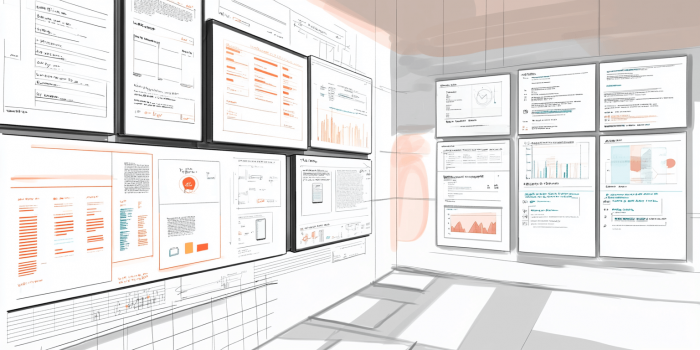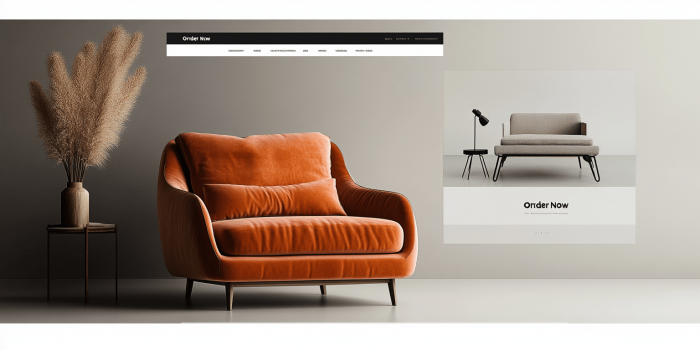- Lack of a clear goal and poor understanding of the target audience
- Poorly structured layout and navigation
- Low-quality or irrelevant content
- Neglecting mobile responsiveness and load speed
- Weak or missing calls to action (CTAs)
- Using templates without business-specific adaptation
- Ignoring technical details and post-launch testing
Many people today are curious about what is a landing page, as it’s often the first point of contact between a customer and a company. A landing page is a single-page website designed to present an offer in a way that not only informs the user but also prompts them to take immediate action – whether that’s submitting a request, making a call, or placing an order. However, this is only achievable if the page is properly structured. A poorly designed page filled with irrelevant or unengaging content will inevitably result in lost customers, lower conversion rates, and wasted ad spend. Let’s take a closer look at the most common mistakes made when developing a landing page, how to avoid them, and what to pay special attention to when working with a web studio.

Lack of a clear goal and poor understanding of the target audience
We believe a landing page’s goal should be immediately apparent from the first few seconds of interaction. If a user cannot quickly grasp what’s being offered and why it might be relevant to them, they’ll move on. A landing page must not distract – it should be focused on driving one specific action, whether that’s ordering a product, requesting a service, or leaving contact details. When the goal is vague or combined with multiple objectives, the page loses its effectiveness, and the business loses potential clients.
It’s equally important to fully understand the target audience. Knowing the age or profession of visitors isn’t enough – you need to understand the specific needs they bring to the page, what matters to them in the decision-making process, and what hesitations might hold them back from acting. Ignoring these nuances means even a visually appealing page with solid functionality won’t be enough to retain visitors.
A successful landing page is a harmonious combination of a clearly defined goal and a precise focus on the individual for whom it was built – never forget that.
Poorly structured layout and navigation
A well-structured landing page with thoughtful navigation is just as essential. When working on these elements, it’s important to avoid the following mistakes:
- Disorganized content flow. When key sections are laid out without logical reading order, users may not know where to start or how to continue.
- Excessive page length. Too many sections overload the user’s attention, making it less likely they’ll reach the key call-to-action.
- Repeating the same message. Duplicate content quickly feels generic and prevents the main idea from standing out, reducing the page’s overall impact.
- Lack of intuitive navigation. If users can’t quickly jump to relevant sections, they’ll likely lose interest and leave.
- Inconsistent visual rhythm. Poorly planned design and jarring alternations of text, images, and buttons disrupt the user experience and create visual imbalance.
Low-quality or irrelevant content
The true power of a landing page lies in its content – explaining the offer in a way that helps users understand it and see its value. When the text sounds natural, clear, and directly addresses user questions, it builds trust and holds attention. But if the content feels generic, lacks context, or relies on empty phrases, the page loses its credibility within seconds. In such cases, the landing page fails as a communication tool, with neither tone nor message connecting with the visitor.

Even worse is when the written content doesn’t align with what users see. If the visuals look artificial, fail to reflect the actual business, or the headlines overpromise compared to what follows, the result is a jarring sense of inconsistency. Users who sense insincerity in the presentation won’t stay engaged, even if the offer itself is compelling. That’s why content quality isn’t just about text or images – it’s the sum of everything the potential customer sees and reads, forming a cohesive impression.
Neglecting mobile responsiveness and load speed
Users access websites from various devices, so mobile optimization has long been a baseline requirement. If a page displays incorrectly on a smartphone or tablet, with shifted elements, unreadable text, or unclickable buttons, interaction ends before the user can even evaluate the offer. In such cases, both conversions and trust are lost, because even a great product or service won’t hold interest without convenient, user-friendly delivery.
Equally important is page load speed, which heavily influences first impressions. If a site loads slowly, users won’t wait – they’ll leave. This not only reduces the flow of potential leads but also affects overall SEO performance, as search engines factor in technical quality when ranking results. That’s why speed and stability in real-world conditions must be priorities during development, not just design and features.
Weak or missing calls to action (CTAs)
When it comes to CTAs, some of the most common missteps include:
- Vague or unclear wording. If the button doesn’t explain the expected action or lacks persuasive phrasing, users won’t feel compelled to click.
- Poor placement. A CTA buried at the bottom or tucked into an inconspicuous spot dramatically reduces interaction chances.
- Too many options. Multiple CTAs on the same page create confusion and dilute focus.
- Lack of visual emphasis. If a CTA doesn’t contrast with the background or grab attention, it’s often ignored.
- Misaligned timing. If a CTA appears too early or before the user is ready to act, it becomes ineffective.
Using templates without business-specific adaptation
For those looking to order a turnkey website, we advise against choosing pre-made templates. While they may seem convenient and affordable at first glance, they rarely meet real business needs. Without a well-planned prototype, it’s difficult to communicate your product’s unique features, the client’s decision-making logic, or the offer’s competitive edge. Template blocks may look familiar, but they don’t speak directly to your business – and instead of a meaningful interaction, the page feels like just another generic site.

A results-driven landing page must be built around content that reflects the company’s actual approach to client interaction, standing out from competitors. Every detail matters – from structure and layout to the sequence of blocks and the CMS used. This flexibility allows for a cohesive communication experience that no template can offer, making it a prerequisite for success, especially if you’re looking to create a page tailored to your business’s nuances.
Ignoring technical details and post-launch testing
Landing page development doesn’t end at the launch phase. Even after going live, ongoing monitoring and testing are essential, as many performance issues only become apparent later. Common technical and logic-related errors include:
| Forms do not transmit submissions or function unreliably. | If integrations have not been properly tested, some leads may never reach the owner. |
| Incorrect analytics setup. | The absence of goals, events, or basic tracking counters makes it impossible to evaluate user behavior. |
| No proper redirect from the www version or the HTTP protocol. | Configuration errors lead to page duplication and harm SEO performance. |
| Unoptimized meta tags and headings. | Without them, search engines cannot understand the page content, and users don’t see relevant information in search results. |
| Incorrect URL structure. | Excessively long or technically generated links appear unnatural and may have indexing issues. |
| Missing or faulty robots.txt and sitemap files. | Without these elements, search engines often fail to detect the page or parts of its content. |
| Insufficient website security. | Improper domain configuration or the use of outdated libraries creates risks for users and undermines their trust. |
Individually, these mistakes may seem minor, but together they significantly undermine conversions, hurt sales, and reduce the landing page’s overall value. That’s why every detail must be considered – from structure and content to technical optimization and post-launch checks. At QuatroIT, we prioritize user experience by building high-converting landing pages that deliver real results – turning visitors into clients. Don’t wait – reach out today. Our web studio is here to help.











